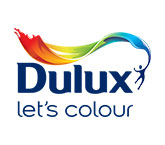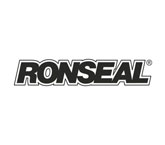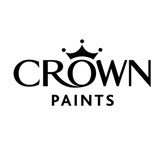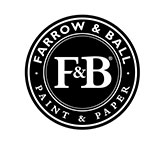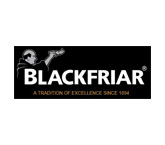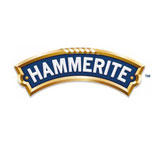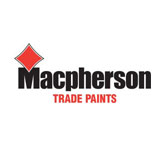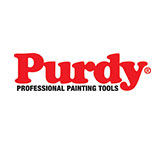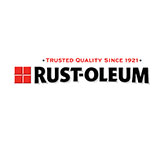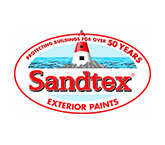Before you load your paint roller tray, wrap a plastic bag all around and over it, so that when you’re finished painting or even changing colour, all you have to do is throw away the bag (safely) and your tray is spotless!
Painting
01 - How to keep you paint roller tray perfectly clean while painting
02 - An easy way to freshen up those glossed or varnished doors, skirtings, etc.
Normally, to paint over previously glossed or varnished surfaces such as doors – three tedious and off-putting jobs. Here’s a little trick yet for a quick lick of paint or varnish to brighten your place up a bit. All you need to do is clean the wood with some warm water and sugar soap, & allow to dry. Apply ESP, using a clean, lint-free cloth and leave it to ‘cure’ for about two hours (at normal room temp). All you need to do then is apply your topcoat directly to the treated surface. For best results, if you are using oil based gloss, satinwood, varnish etc, add in some Owatrol oil as it makes it ‘flow out’ nicer and gives a great finish. If you choose to apply water-based gloss etc, consider adding in some Floetrol paint conditioner for a similar result.
03 - How to prevent paint peeling
Insufficient key or grip, is usually the cause of paint peeling or flaking. It can occur on virtually any substrate. Shiny surfaces such as tiles, aluminium, melamine etc require a special primer like ESP to make paint stick otherwise the paint will simply peel off. Other examples would be applying gloss over gloss or varnish over varnish. On all shiny surfaces, prime first with ESP primer (Easy Surface Prep) for a good solid grip.
On other (non-shiny) surfaces such as normal wood, metal etc, if you plan to use oil-based undercoats. For a really strong paint grip and increased covering / hiding power stir in about 25% Owatrol oil. For emulsions, you can add up to 30% of E-B (Emulsa-Bond) into your first coat of any water based paint, the result will be a peel-proof finish. Some typical areas for above problems include sills, wall cappings, wooden facias and soffits.
04 - Painting PVC down-pipes, gutters, etc.
Tired of ugly faded plastic PVC down pipes? You can now paint them any colour under the sun by using ESP (Easy Surface Primer). Just clean the plastic with some sugar soap and water, allow to dry. Allow ESP to cure for a few hours and then you can paint them any colour you wish with either water based or oil based paint.
05 - Low hide/low opacity colours
When painting with yellows, reds etc, to save yourself a possible coat or two of paint by adding a paint conditioner called FLOETROL to water based emulsion/acrylic paints. If you are using oil-based paint, add some OWATROL Oil.
06 - Roller/brush marks on deep colours
Dark or deep colours have a habit of showing up all kinds of roller marks, streaks especially where cutting in and around light fittings. Prevent that problem by adding about 10% Floetrol into your paint. Paint will flow out level with no brush marks or streaks.
07 - Water based gloss paints
Add some Floetrol (up to 15%) to help the paint flow out level & brush mark free.
08 - Painting galvanised steel
Wipe clean with cellulose thinners and apply AQUALOCK primer sealer and stain blocker.
09 - Sealing stone, brick, wood, etc.
Apply Owatrol Oil with a brush, roller or spray. Wipe off any excess that does not penetrate to avoid shiners or ponding. Add some VC175 to prevent mould, algae, etc.
10 - Painting whitewash or old distemper
Painting right over old distemper is no problem if you add about 30 to 40% E-B to your first coat of emulsion. Also works very well on poor sandy surfaces or brick. Must not be used in second coat of emulsion.
11 - Flies stuck on newly painted surfaces
Don’t try and pick the flies out of the wet paint. Leave the paint to dry overnight and the flies can be wiped away with a damp cloth next day without leaving a trace.
12 - Hairs left on paint
If you get a brush bristle in your paintwork, don’t try to pick it out with your fingers. Turn the brush and gently pick up the bristle with the very edge of the brush. Even very small bits of hair and bristle can be picked up in this way.
13 - Painting tiles, aluminium, formica, PVC, glass, MDF, melamine, etc.
Use ESP (Easy Surface Prep) Clean the work surface properly with sugar soap, & allow to dry. Wipe on ESP with a clean lint-free cloth or a piece of cotton. Apply either oil or water based paints (to the ESP primed surface) after approximately 90 minutes.
14 - Problem with brush or roller marks
For any oil based paint or varnish, add some OWATROL Oil paint conditioner. For water based paints (interior or exterior) add FLOETROL paint conditioner (usually between 7 and 20% depending on conditions).
15 - Painting new drywall
Add 25% E-B (Emulsa-Bond) into first coat of emulsion for a superb grip, smooth application and “pull-off resistant” finish. Superb where posters etc are used such as on kids bedroom walls, offices etc.
16 - Paint wrinkling
This is caused by applying a second coat before the first one is dry or applying in strong, bright, direct sunlight. Sand down until smooth and re-paint.
17 - Winter painting
When using any oil-based paint, undercoat or varnish during cold weather add some Owatrol Oil instead of white spirits and you will be able to paint even in below freezing conditions. Owatrol has a similar effect in hot conditions; i.e. when white spirit evaporates quickly, Owatrol does not evaporate thereby keeping paint workable without pull or drag.
18 - Paint too thick to brush or roll
Paints in general terms, are manufactured to work at their best in given temperature ranges. When temperature drops or rises, paint can become more difficult to brush or roll. In such conditions, emulsions can be made more workable by adding in about 10% of a paint conditioner such as Floetrol.
All oil-based paints can be loosened up by adding about 5% to 10% oil based conditioner such as Owatrol Oil. Unlike water or white spirit thinning, those additives, actually increase paint hiding power and coverage, and so do not damage the inherent good qualities of the paint.
19 - Paint skinning
A skin will always form on paint once the tin has been opened and the lid left off. This is more likely to happen with gloss finish paints, so before you re-close the can, pour a very small amount (about a tablespoon or less) of white spirit on the paint, just enough to cover the surface.
This will prevent a skin forming for up to a week. You can also store the paint container upside down, first ensuring that the lid is properly (and tightly) fixed in place.
20 - Painting with vinyl silks
Vinyl Silk paints tends to be a bit poor on hiding and can also be a bit streaky. For better hiding/covering power, and much easier rolling or brushing, add about 10% FLOETROL emulsion paint conditioner – you’ll definitely see the difference!
21 - Paint flaking off facias, sills, etc. (when using oil based paint)
After removing all the loose stuff, mix about 30% Owatrol Oil into your first coat and apply. This will give massive penetration and bonds the paint tightly. Add up to 20% of Owatrol Oil into subsequent coat(s) for a superb finish that will not peel or flake off.
22 - Painting MDF / 3 great tips
• Apply an emulsion with about 33% Emulsa-Bond added in to your first coat only. You will find tremendous hiding power and superb paint adhesion. If you wish to make it washable or have a glossy finish, apply a coat of water based clear varnish on top.
• If MDF is for outdoor application, use as above but with exterior masonry paint for best effect.
• Apply ESP (Easy Surface Prep) all over the MDF and especially into the edges. Leave about one to two hours at normal room temp, and then paint over with any Water or Oil based paint!
23 - Painting asbestos sheeting and roof tiles
Irrespective of whether underside or outside of old asbestos sheeting, mix 50% E-B (Emulsa-Bond) into first coat of any good quality exterior masonry paint and apply. If second coat required, use the paint without E-B.
24 - Doing special effects e.g. ragging, sponging, colour washing, etc.
Mix some FLOETROL paint conditioner into your emulsion. Rule of thumb is: the longer you want the paint to stay ‘open’ or workable -the more FLOETROL you add. Simple!
25 - Rolling ‘HOT’ ceilings or drywall
To make rolling on paint much easier with no more hardship, just add some FLOETROL to your emulsion, and you will put an end to paint streaking and roller mark problems. The cost of the Floetrol will be paid back by extra coverage and time saved.
26 - Cold rooms - how to cut heat loss
Some walls and ceilings, especially in older houses have very poor insulation and are very hard to heat. Thermilate, an amazing insulator paint additive, will drastically reduce heat loss out though walls and ceilings. Use in 2 coats for best effect.
27 - Paint smell
You can get rid of most of the smell of paint by adding some ZAPP to your paint. Suitable for all types of paint and coatings.
28 - Lovely rustic for interior wood
A beautiful rustic look can be achieved on indoor wood with a coat or two of Owatrol Oil used neat. Apply by brush or roller, wet on wet. Leave about 40 minutes between coats and wipe off excess to avoid shiny spots. Stain it if you wish to darken.
29 - Cement/plaster marks on wooden windows/sills, etc.
Caustic Soda, acts as a whitener on cement burn marks. Mix the caustic soda with water as per instructions and apply to the wood. The caustic soda will bring them all back to one colour. Wash off. You can then proceed to stain or varnish as normal. Note: Follow the usual safety precautions when using caustic soda.
30 - Previous finish peeling fom decking.
No need to sand. Remove old stain etc with Prepdeck a very powerful concentrated cleaner. Neutralise immediately after with Diluted Net-Trol. After 3 to 4 good drying days, re treat wood with Textrol Clear or Golden Oak or Rustic Oak.
31 - Revive faded, dried out, untreated wood
Wet thoroughly, apply Net-Trol diluted, wood returns to new look. Follow instruction on bottle.
32 - Treating new decking and garden furniture
Because newly installed, wood is usually not receptive to oil treatment, apply one coat of Seasonite. A powerful product to help prevent common problems like splitting, warping, cupping etc. Also helps prevent slippery surface on decking.
33 - 5 Steps to the proper treatment of badly rusted steel or iron
Owatrol Oil is a very simple, yet powerful treatment that lasts years longer than any other treatment. Here’s how you do it:
• Paint the entire surface, including rust lumps and seemingly rust-free areas, with Owatrol.
• After an hour or so, get a scraper and de-scale (the loosened rust lumps) with minimal effort. You don’t need to hammer or wire brush the steel. Brush off loose dust and rust particles with a dry brush.
• Top up any ‘hungry’ areas with another drop or two of Owatrol Oil and leave for 24 hours to dry to a tough but flexible finish.
• Apply a coat of oil based metal primer with about 25% Owatrol Oil added.
• 5: Apply top coat of oil based paint, whatever colour you like, with about 10% of Owatrol Oil added in to help flow.
34 - Dealing with rusty nail heads
If you ever come across rusted nail heads in facias etc all you have to do is, get a clean old paint brush, dip it in Owatrol Oil and dab it on to the nail head liberally. This will seal up the nail fully, and fix the problem for years. Paint over with paint (oil) containing Owatrol Oil.
35 - Painting rusted wire mesh, chain link fencing, etc.
This is a very easy and useful tip, which can save the day in many situations. Because of the awkward shape of this type of material, it was always a problem to treat or maintain. All you have to do is get some Owatrol Aluminium, a reasonably long haired paint roller and apply. Don’t be too surprised if the Owatrol Aluminium crawls or creeps right around the rear of the fence because it gets everywhere. It is truly a great product for all this type of work. It is also very flexible when cured, which allows it to move with the fence without cracking etc.
36 - Reviving tile grout
Wash first with a solution of warm water and household bleach. When dry, apply silicone Tile Grout Sealer.
37 - Sealing new grout
Stop grout from becoming dirty for up to five times longer. Apply Silicone Tile Grout Sealer.
38 - Rust stains on concrete
To remove ugly rust stains from a concrete wall or stone, use Net-Trol an environmentally friendly, oxalic based cleaner. Ideal, where you have aerial brackets, balustrades, nails etc. Wet surface completely, apply Net-Ttrol (dilute up to 4:1) Leave for up to half an hour and rinse, or power wash off.
39 - Bringing fibreglass back to life
Dull faded Fibreglass need not present a problem anymore! Clean first with Net-Trol and when that dries apply Polytrol or Owatrol Oil and buff to a shine.
40 - Mildew/Mould
Remove mildew with a 50:50 mix of bleach and warm water. Mildew needs moisture to survive, so identify and fix the moisture problem before redecorating. A common cause of mildew is insufficient ventilation, bad insulation and or lack of heating. To prevent the mildew or mould coming back, just add some VC175 Mould Stop to subsequent paint coats. Also very good on outdoor walls near trees, bushes etc.
41 - Wood pigment stains
Some wood extracts, usually brown in colour, bleed through some paint finishes. Wash with soapy water, prime with a primer sealer like Aqualock and re-coat.
42 - Filler sanding
If you apply too much filler, it makes your job harder. After applying filler, smooth it off with a damp sponge or wet brush to remove the sharp edges. Some powder fillers and most ready-mixed fillers dry very hard so apply as smoothly as possible.
43 - Greasy walls and ceilings
Painting kitchen areas can often be tricky due to all the greasy deposits all over the place. Paint as we all know will not stick to that, and one good solution is to wash thoroughly with sugar soap and warm water and allow to dry prior to any painting.
44 - Is it dampness or is it condensation
Not sure if your wall is letting in damp or if it’s condensation? Cut out about 20 square inches of household cooking silver foil and tape it to the wall with good masking tape or duct tape. If its damp coming in, the inside of the foil will gather drops of water after a time. If condensation, it will remain dry on the inside.
45 - Dried-in emulsion splashes
Oops! will remove dried in emulsion spatters etc from most surfaces without adverse effects on the substrate.
46 - Water stains on ceilings, etc.
The fast and easy answer is Seal-Lock, available in cans or Aerosol.
47 - Paint over wallpaper
No problem. Check out the amazing Prep-A-Wall.
48 - Removing oil-based paint from your skin
To remove oil-based paint from your skin, rub with some Vicks VapoRub on a cotton wool pad. The reason for doing this is because it contains paraffin… you will smell like a pharmacy but you will have paint free skin!
49 - Painting Pipes
If you have to paint pipes which are fixed to a wall, cut out a piece of cardboard and place this behind the pipes to be painted and then paint in the usual way. This will prevent any paint getting onto the wall behind.
50 - Cleaning Paint Brushes
After cleaning paint brushes, wrap the bristles in a piece of folded kitchen roll and let them dry. This way the ‘form’ of the bristles is retained, instead of fanning out.




